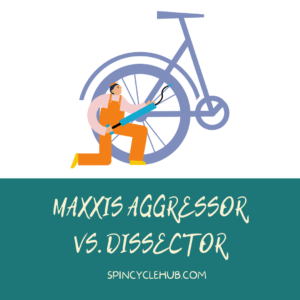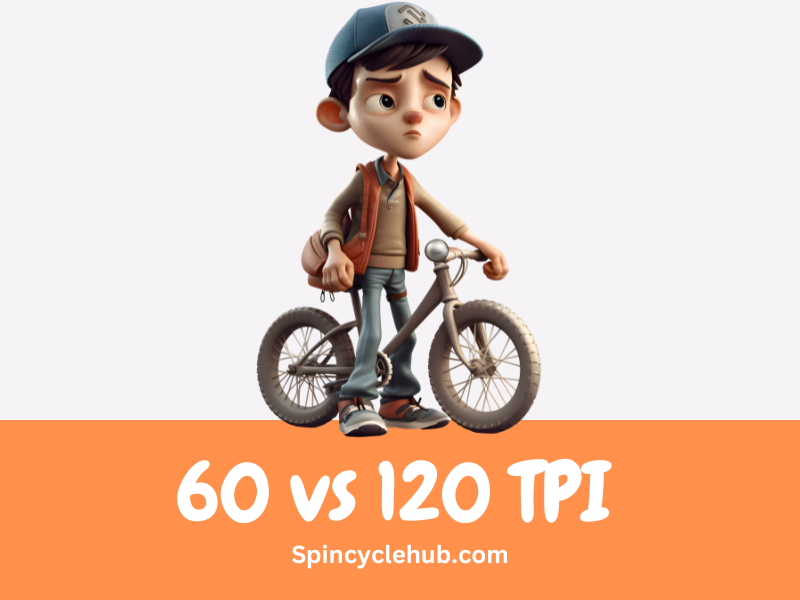Introduction:
When it comes to mountain biking, one of the most crucial factors that can make or break your riding experience is the choice of tires. A well-suited tire can enhance your grip, traction, and overall control, providing a smoother and more enjoyable ride. In the world of mountain bike tires, Maxxis stands out as a reliable and popular brand, offering a range of high-performance options. Two of their standout models are the Maxxis Aggressor and the Maxxis Dissector. In this article, we’ll take a closer look at these two tires, comparing their features, performance, and suitability for different trail conditions. So, let’s dive in and find out which tire is the perfect match for your riding style.

Understanding the Maxxis Aggressor and Dissector:
Maxxis is renowned for its commitment to producing high-quality tires that deliver exceptional performance on the trails. Both the Maxxis Aggressor and Dissector exemplify this dedication, but they cater to slightly different riding styles and conditions.
The Maxxis Aggressor is designed for aggressive trail riding. Its tread pattern features moderately spaced lugs that provide excellent grip and traction on a variety of terrains. The Aggressor’s side knobs are strategically placed to enhance cornering control and stability. This tire is favored by riders who tackle challenging and technical trails with confidence. Many riders swear by the Aggressor’s ability to maintain traction even in loose and muddy conditions, making it a reliable companion for all-weather riding adventures.
On the other hand, the Maxxis Dissector is purpose-built for fast and loose conditions. Its tread pattern is optimized for speed, with ramped center knobs that offer low rolling resistance, ensuring quick acceleration on hard-packed trails. The widely spaced and aggressive side knobs provide additional cornering grip and confidence. The Dissector is ideal for riders who prioritize speed and efficiency, especially in dry and loose terrains where maintaining momentum is key.
Tackling the Trails with the Maxxis Aggressor:
If you’re an adrenaline-seeking rider who loves the thrill of conquering technical trails, the Maxxis Aggressor might be your perfect tire companion. The Aggressor’s tread pattern, with its aggressive lugs, allows for exceptional grip and traction, ensuring you stay firmly planted on the trail even in challenging conditions. When taking on tight corners, the Aggressor’s side knobs dig in, providing reliable control and stability. Countless riders have shared anecdotes of successfully navigating treacherous descents and maintaining control throughout the ride, thanks to the Aggressor’s dependable performance.
Dominating the Dirt with the Maxxis Dissector:
For those who crave speed and thrive in loose trail conditions, the Maxxis Dissector is a tire worth considering. The Dissector’s specialized tread pattern, with its ramped center knobs, allows for quick acceleration and low rolling resistance. This translates to effortless pedaling and the ability to maintain momentum on hard-packed surfaces. Additionally, the Dissector’s aggressive side knobs ensure predictable cornering and control, inspiring confidence in fast and technical sections. Riders who prioritize speed and love the exhilaration of a fast-paced ride have praised the Dissector for its ability to deliver an adrenaline-fueled experience.
Comparing Performance in Different Trail Conditions:
When it comes to trail conditions, both the Maxxis Aggressor and Dissector have their areas of expertise. The Aggressor shines in muddy and wet terrains, where its deep and widely spaced lugs effectively shed mud and maintain grip. It excels in providing reliable traction when other tires may struggle. Conversely, the Dissector’s tread pattern is optimized for dry and loose conditions, where its ramped center knobs allow for exceptional rolling efficiency and speed. In dry and loose terrains, the Dissector delivers maximum traction and control, allowing riders to push their limits without compromising on stability.
However, it’s important to note that tire pressure plays a significant role in the performance of both these tires. Adjusting tire pressure according to the trail conditions can further optimize their capabilities and ensure an enjoyable ride. Many riders have shared their experiences of fine-tuning tire pressure and witnessing a noticeable difference in grip, traction, and overall performance.
Durability and Longevity: Which Tire Holds Up?
Durability is a crucial aspect to consider when choosing a mountain bike tire. The Maxxis Aggressor boasts a robust construction and excellent puncture resistance. Its reinforced sidewalls and durable compound make it a reliable companion, even in rugged and rocky terrains. Riders have praised the Aggressor’s ability to withstand sharp rocks and rough trails without compromising its performance.
On the other hand, the Maxxis Dissector prioritizes lightweight design and rolling efficiency, which may come with trade-offs in terms of durability. While the Dissector is a capable tire that delivers exceptional speed, it may not be as puncture-resistant as the Aggressor. Riders who have pushed the limits of the Dissector on particularly rocky terrains have reported a higher incidence of punctures and tire damage. However, for riders who prioritize speed and weight savings, the Dissector’s lightweight design can be a worthwhile trade-off.
Factors to Consider When Choosing Your Tire:
Selecting the right tire ultimately comes down to your riding style, preferences, and the conditions you frequently encounter. Here are some key factors to consider:
1. Riding style and preferences: Determine whether you prioritize aggressive trail riding or fast-paced, loose conditions.
2. Trail conditions and terrain: Assess the predominant trail surfaces and weather conditions you ride in.
3. Bike compatibility: Check the tire sizes available for your bike and ensure proper frame clearance.
4. Personal anecdotes and insights: Seek out experiences and recommendations from riders with similar needs and preferences.
Price and Value for Money:
Pricing is an important consideration when choosing mountain bike tires. The Maxxis Aggressor and Dissector are both priced competitively, with slight variations depending on tire size and specific models. Assessing the value each tire offers for its cost is crucial. Consider factors such as durability, performance, and longevity, and weigh them against the price to determine the long-term investment of your tire choice. Riders have noted that while the Aggressor may have a slightly higher price point, its durability and all-weather capabilities make it a valuable long-term investment.

Choosing Your Champion: Aggressor or Dissector?
In conclusion, both the Maxxis Aggressor and Dissector are exceptional tires, catering to different riding styles and trail conditions. The Aggressor thrives in aggressive trail riding scenarios, offering outstanding grip, traction, and stability, especially in muddy and wet conditions. On the other hand, the Dissector is a speed-oriented tire designed for fast and loose trails, delivering excellent rolling efficiency and control in dry and loose conditions.
To make an informed decision, assess your own riding style, the prevalent trail conditions you encounter, and your preferences for speed or aggressive trail riding. Consider user reviews, experiences, and expert opinions to gather insights that align with your specific needs. Ultimately, selecting the right tire will enhance your riding experience and allow you to confidently conquer the trails.
FAQs:
1. Can I use the Maxxis Aggressor or Dissector on both front and rear wheels?
– Yes, both the Aggressor and Dissector can be used on either the front or rear wheel, depending on your preferences and riding style.
2. Are the Aggressor and Dissector tubeless-ready?
– Yes, both tires are tubeless-ready, allowing you to take advantage of the benefits of tubeless setups, such as lower tire pressures and improved puncture resistance.
3. Do these tires come in different sizes?
– Yes, both the Maxxis Aggressor and Dissector are available in a range of sizes to accommodate different bikes and preferences. Check the Maxxis website or consult with your local bike shop for specific size options.
4. Which tire performs better in rocky terrains?
– The Maxxis Aggressor, with its robust construction and puncture resistance, is generally favored for rocky terrains where durability is crucial. However, tire pressure adjustments and personal riding style also play a significant role in performance.
5. Are there any alternatives to the Aggressor and Dissector in the Maxxis lineup?
– Yes, Maxxis offers a wide range of mountain bike tires catering to various riding styles and trail conditions. Depending on your preferences, you may explore other popular models like the Maxxis Minion or High Roller for different terrains and riding needs.
Important Links:
1. Maxxis Aggressor Product Page
2. Maxxis Dissector Product Page
Watch this one,
Video Credits – The Lost Co.
DOWNLOAD THIS ARTICLE : Maxxis Aggressor vs. Dissector
You May Also Like
-
Mac Ride vs. Shotgun Seat: Which Bike Child Seat is Right for You?
-
Boost 141 Rear Hub: Unlocking Performance and Control for Your Ride
-
Trek Mino Link High or Low: Finding the Perfect Suspension Setting for Your Bike



